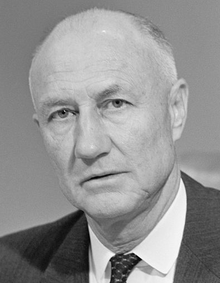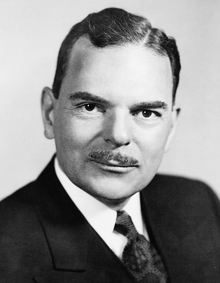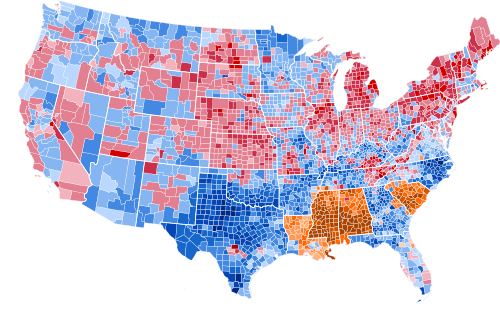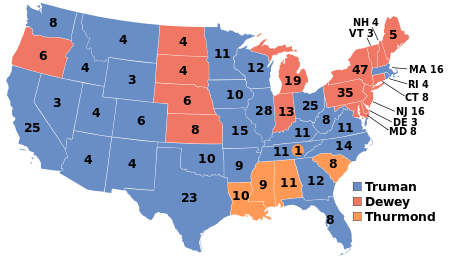United States presidential election in Alabama, 1948
| | ||||||||||||||||||||||||||||||||
| ||||||||||||||||||||||||||||||||
| ||||||||||||||||||||||||||||||||
|
| ||||||||||||||||||||||||||||||||
County Results
| ||||||||||||||||||||||||||||||||
| ||||||||||||||||||||||||||||||||
In the United States presidential election of 1948, Alabama was the only state in which the National Democratic Party candidate, incumbent president Harry S. Truman, did not appear on the ballot. Instead, South Carolina governor Strom Thurmond obtained the official Democratic Party line, along with being considered the official Democratic nominee in Georgia, Louisiana, and Mississippi. In other southern states where he was on the ballot, Thurmond was forced to run under the label of the States' Rights Democratic Party.
Thurmond overwhelmingly won Alabama by a margin of 60.71%, or 130,513 votes, against his closest opponent, New York governor Thomas E. Dewey.[1] Two third party candidates, Henry A. Wallace of the Progressive Party and Claude Watson of the Prohibition Party, appeared on the ballot in Alabama, though neither had any impact on the election there.
Analysis
Alabama in this time period was a one-party state dominated by the Democratic Party. The Republican Party was virtually nonexistent as a result of disenfranchisement among poor whites and African Americans, including voter intimidation against those who refused to vote Democrat. In the 1948 election, rifts in the national Democratic Party began to occur.
Southern Democrats walked out at the party's national convention in Philadelphia because of Truman's endorsement of civil rights for African Americans. This segregationist faction met on July 17, 1948, in Birmingham, Alabama, nominating South Carolina governor as its nominee for president. Mississippi governor Fielding L. Wright was nominated for Vice President.
Thurmond won 66 of Alabama's 67 counties, with the sole holdout being Winston County in the northern part of the state, giving Dewey over 60% of the vote.
References
- ↑ Leip, David. "Dave Leip's Atlas of U.S. Presidential Elections". uselectionatlas.org. Retrieved 2016-10-22.



